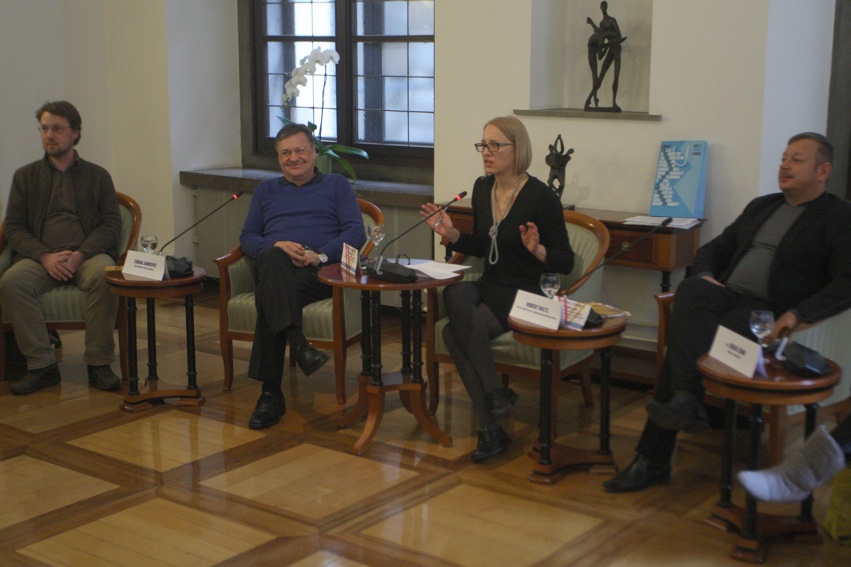2nd Festival of Tolerance
On 26 February 2016, within the scope of the 2nd Festival of Tolerance, a video conference titled »Holocaust in Slovenia and Croatia« was held at the City Hall.
In the first part of the discussion, the participants shed light on the events during the World War II and holocaust in Slovenia. The panellists were DR Irena Šumi, Dr Janez Premk and Dr Andrej Pančur (Institute of Contemporary History), Dr Matevž Košir (Archives of the Republic of Slovenia) and Robert Waltl (Jewish Cultural Centre, Mini Theatre and Festival of Tolerance Ljubljana).
The panellists in Zagreb were Nataša Jovičić (representative of the President of the Republic of Croatia), Zvonko Kusić (president of the Croatian Academy of Sciences and Arts), Goran Radman (director of the Croatian Radio and Television), Tvrtko Jakovina (historian), Ognjen Kraus (president of the Jewish Municipality Zagreb) and Branko Lustig (holocaust survivor).
In the second part of the conversation, the panellists in Ljubljana and Zagreb were joined by Mayor Zoran Janković and Deputy Mayor of Zagreb Vesna Kusin. In the focus of the discussion was the question of erecting a holocaust monument both in Ljubljana and Zagreb.
As part of the festival the exhibition titled Power and Powerless by the Japanese artist Seiji Kimoto is on display at the City Hall until 28 March 2016.
Seji Kimoto is a versatile artist with Japanese roots who has lived and worked in Neunkirchen, Germany, for decades. With his sculptures, paintings, wall design, Zen calligraphy, graphics and drawings Kimoto has held a prominent position on the German art scene since the 1970s. Through his works, a blend of traditional and modern, expression and poetry, he addresses historical problems and explores human values.
Before the exhibition opening the author said: »Holocaust – the pinnacle of human contempt for inhumanity – was the inevitable background for my sculptures. For me it is also important to stress the POWER which is expressed in the RESISTANCE against arbitrariness, the POWER of those who seem POWERLESS.«
On display at the City Hall are sculptures made of wood, rope, metal and stone, strongly expressive with their peculiar textures, shapes and colours, as they are addressing human freedom and captivity, showing how resistance can emerge from powerlessness and can help preserve dignity even in the most humiliating situations. The author’s new sculpture, created just for this exhibition, is displayed in the Glass Atrium.


